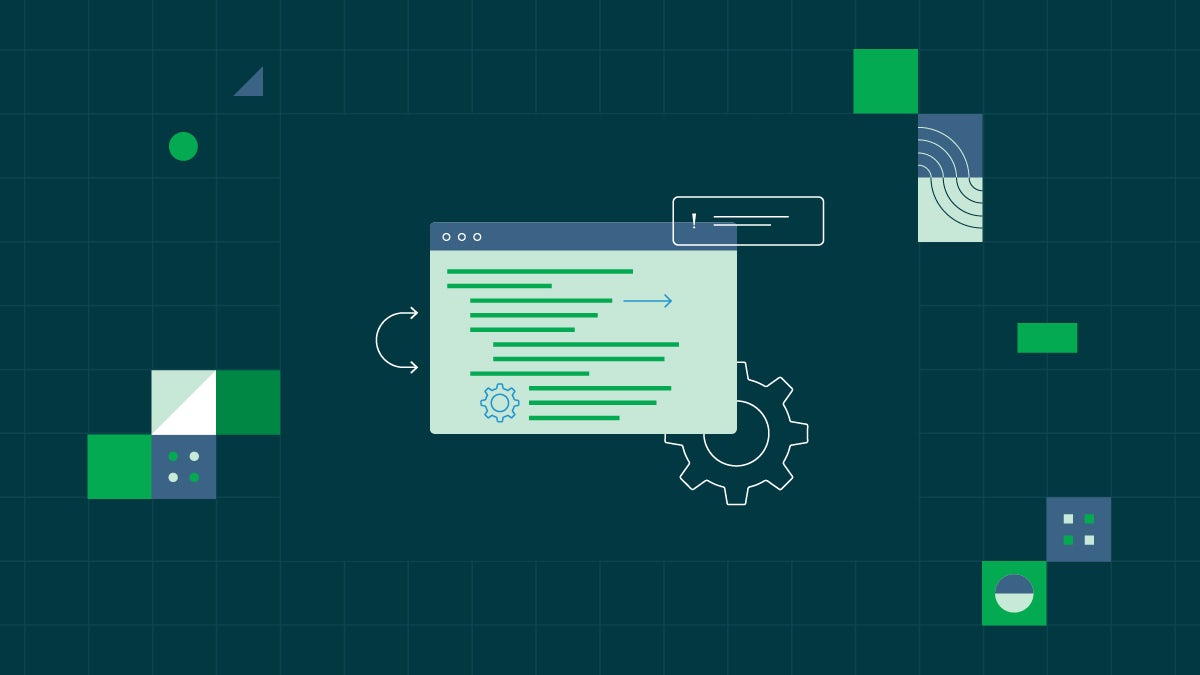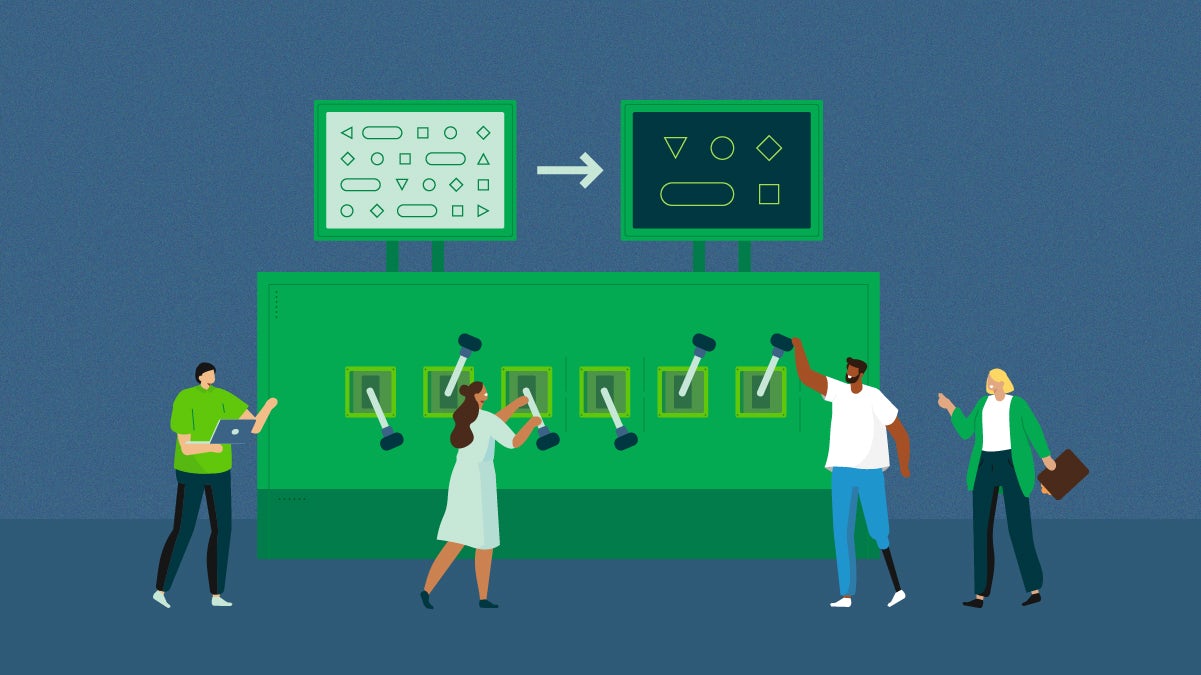From MLOps to LLMOps: The evolution of automation for AI-powered applications

Senior Technical Content Marketing Manager

Machine learning operations (MLOps) has become the backbone of efficient artificial intelligence (AI) development. Blending ML with development and operations best practices, MLOps streamlines deploying ML models via continuous testing, updating, and monitoring.
But as ML and AI use cases continue to expand, a need arises for specialized tools and best practices to handle the particular conditions of complex AI apps — like those using large language models (LLMs).
Enter large language model operations (LLMOps), a cutting-edge approach to AI development that addresses the challenges of building with LLMs. LLMOps is not just about managing these models: it also includes their orchestration, governance, and optimization. LLMOps helps your team realize the full potential of an LLM.
This article explores the transition from MLOps to LLMOps in more detail. We will discuss what LLMOps is, how it differs from MLOps, and review examples of AI applications that can benefit from using LLMOps.
What is LLMOps?
LLMOps adapts and extends the principles of MLOps to cater to the unique requirements of LLMs. LLMs need enhanced infrastructure for training on vast datasets, more sophisticated version control for iterative model improvements, and advanced monitoring for performance and ethical considerations. LLMOps provides a framework for meeting these specifications.
LLMOps is transformative because it is not merely about managing the complexity of LLMs and AI operations. It is about harnessing this complexity and optimizing your use of sophisticated LLMs to create advanced AI applications.
With LLMOps, innovation and iteration are native to the development process. It enables you to deploy models that can understand and generate human-like text, opening doors to applications we have only just begun to explore: data processing, AI co-pilots, chatbots, and more.
LLMOps introduces practices and tools specifically geared toward LLM-related tasks, including:
-
An emphasis on handling massive language models with intricate architectures, specialized infrastructures, scalability, and linguistic dataset processing.
-
Support for fine-tuning techniques specific to language tasks, with help from automation.
-
Sophisticated natural language processing (NLP) components for nuanced comprehension and generation.
-
Model interpretability and intelligibility to build transparency around and trust in language-driven AI systems.
LLMOps vs MLOps
The transition from MLOps to LLMOps is necessary because of the intricate architecture and substantial data demands of contemporary AI models like OpenAI’s GPT-4. This evolution is more than an incremental improvement. It is a critical leap in the field.
With this in mind, it is important to note that LLMOps and MLOps cater to distinct AI model development, deployment, and maintenance needs.
MLOps offers a versatile framework for a broader spectrum of ML applications. It streamlines processes, from initial development to deployment and ongoing maintenance, across diverse domains like image recognition and predictive analytics.
LLMOps specializes in LLMs, tailoring infrastructure for linguistic complexity and real-time understanding. It addresses the unique challenges of massive-scale NLP, effortlessly navigating linguistic datasets, performing real-time language understanding, and adapting the model as needed. LLMOps also optimizes resource management to handle the scale and detail inherent in language-driven applications.
Similarities between LLMOps and MLOps
Because LLMOps builds on MLOps, there are some similarities among their foundational principles:
-
Lifecycle management — Both MLOps and LLMOps revolve around effective lifecycle management of ML models. From development and training to deployment and monitoring, the development lifecycle and model integration process should be speedy and smooth.
-
Collaboration — MLOps and LLMOps value collaboration among cross-functional teams. Both emphasize cohesive teamwork among data scientists, engineers, and operations teams to accelerate workflows, enhance communication, and achieve optimal model performance.
-
Automation — Automation is a key theme in both practices. MLOps and LLMOps embrace automation for model training, testing, deployment, and monitoring. Automation is integral to maintaining agility, enabling rapid iteration and updates in response to evolving requirements.
Differences between LLMOps and MLOps
Even with the similarities listed above, there are significant differences between LLMOps and MLOps. LLMOps implements some features that address specific LLM challenges.
-
Scale and resource management — MLOps deals with a range of model sizes, while LLMOps specifically tackles the challenges associated with extremely large language models. This demands a different approach to resource allocation, storage, and processing power.
-
Data diversity and complexity — LLMOps grapples with the intricacies of linguistic diversity and complexity in datasets, addressing challenges like handling multilingual models and multiple writing styles. This is a departure from MLOps, which may focus on more standardized data formats.
-
Real-time language understanding — LLMOps emphasizes real-time language understanding and generation, as language models often need to respond dynamically to user input. MLOps scenarios often involve less-complicated tasks like batch processing or periodic model updates.
The differences between LLMOps and MLOps make each framework well-suited to different application types. With its tailored approach to handling massive language models, LLMOps excels with large-scale NLP applications. Its focus on linguistic nuances makes LLMOps instrumental for applications calling for sophisticated language understanding and real-time generation at scale.
Conversely, MLOps finds its niche in diverse domains where ML models require consistent deployment, monitoring, and maintenance. From predictive analytics in finance to image recognition in healthcare, MLOps streamlines the lifecycle of models across varied applications, providing reliability in scenarios that are not language-based.
Use cases for LLMOps
In this section, we will cover some specific use cases for LLMOps. First, though, let’s review how LLMOps improves the performance, efficiency, and accuracy of AI-powered applications from a high level.
Because LLMOps prioritizes optimizing the performance and accuracy of LLM-powered applications, it offers some significant speed-related gains. LLMOps reduces latency and supports faster response times. This effect, in turn, minimizes computational overhead. Also, LLMOps supports scalability by allowing language models to handle increased workloads without compromising functionality.
Accuracy also receives a substantial boost, as LLMOps integrates continuous model training and fine-tuning mechanisms. This approach helps language models evolve in real time, staying attuned to dynamic linguistic nuances and trends.
To help you understand how these features benefit real-world applications, here are three use cases where LLMOps can help you capture the full potential of an LLM’s advanced linguistic capabilities.
Customer service chatbots
LLMOps helps elevate customer service chatbots by boosting responsiveness, improving accuracy, and offering a tailored solution to enhance user interactions. By optimizing the deployment of language models, it ensures quick and contextually relevant responses.
Additionally, LLMOps’ dynamic learning capabilities enable you to account for evolving language nuances. This aspect is crucial for delivering considerate, precise responses that shape the customer experience.
Content generation tools
LLMOps benefits content generation tools because it supports generating quality content efficiently. Because LLMOps excels in deploying and managing language models, generation requires fewer resources and less time. Its continuous training and fine-tuning help language models evolve in real time to generate consistently relevant and engaging content at scale.
Complex data analysis applications
In data analysis applications, speed, accuracy, and adaptability are paramount. For these applications, LLMOps optimizes language models to promote swift processing of diverse and expansive datasets. Its continuous training mechanisms enable models to readjust to evolving data patterns, improving analytical precision over time.
CI/CD and LLMOps
LLMOps harnesses the power of continuous integration/continuous delivery (CI/CD) practices to unify and consolidate development and deployment. CI/CD encourages seamlessly integrating code changes into the model, automating testing and deployment.
In the context of LLMs, CI/CD facilitates frequent updates and improvements. It ensures that changes to the model’s codebase are automatically integrated, tested, and deployed, supporting rapid and stable updates. CI/CD helps you swiftly identify and address issues, reducing the time between development and deployment cycles. This agile approach facilitates frequent enhancements to the model, fostering continuous improvement.
CI/CD’s agility helps you respond promptly to evolving requirements. With frequent deployments, you can quickly address emerging linguistic nuances, improve model performance, and implement robust security measures.
Using CI/CD alongside your LLMOps practice accelerates development cycles and enhances your AI applications’ reliability, adaptability, and responsiveness. You can get started delivering better AI applications with LLMOps by signing up for a free CircleCI account and following along with these resources:
- Build and evaluate LLM-powered apps with LangChain and CircleCI
- Build and test LLM applications with AIConfig and CircleCI
- LLM hallucinations: How to detect and prevent them with CI
- Prompt engineering: A guide to improving LLM performance
Conclusion
LLMOps has emerged as an essential tool for developers looking to effectively manage, deploy, and maintain applications built on sophisticated language models. It represents the next frontier in AI development, offering efficient optimization of sophisticated language models.
As advanced AI applications continue to influence the technological landscape, adapting to this operational model is essential if you want to stay competitive. Those who integrate LLMOps into their workflows will be better positioned to navigate the evolving AI terrain and ultimately harness the power of language models for creative, high-performing, and high-impact AI applications.




